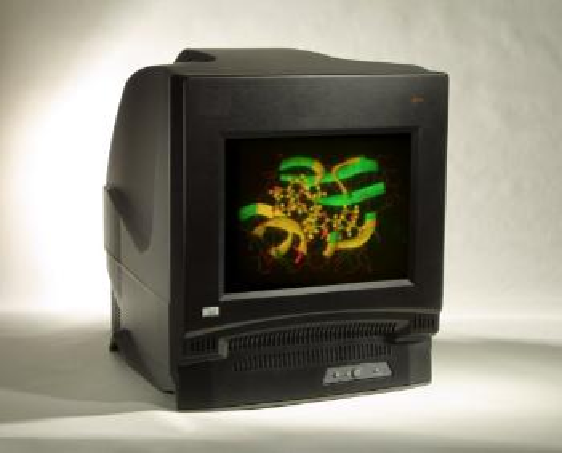Information Technology Reference
In-Depth Information
Fig. 12
DepthCube volumetric display. Image courtesy of LightSpace Technologies Inc
5 Light Field Displays
5.1 Integral Imaging
Integral imaging [52] 3D displays use a lens array and a planar display panel.
Each elemental lens constituting the lens array forms each corresponding elemen-
tal image based on its position, and these elemental images displayed on the panel
are integrated forming a 3D image. Integral imaging can be though of as a 2D ex-
tension of lenticular lens based multiview techniques, providing both horizontal
and vertical parallax. Real-time generation of integral images from live images has
been demonstrated [53].
Its disadvantages are narrow viewing angle and reduced resolution. The view-
ing angle within which observers can see the complete image is limited due to the
restriction of the area where each elemental image can be displayed. Each elemen-
tal lens has its corresponding area on the display panel. To prevent image flipping
the elemental image that exceeds the corresponding area is discarded optically in
direct pick up method or electrically in computer-generated integral imaging
method. Therefore the number of the elemental images is limited and observers
outside the viewing zone cannot see the integrated image.
5.2 Holographic Displays
Pure holographic systems [54] have the ability to store and reproduce the proper-
ties of light waves. Techniques for creating such holographic displays include the

